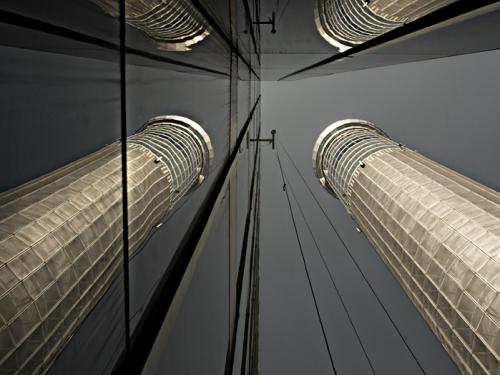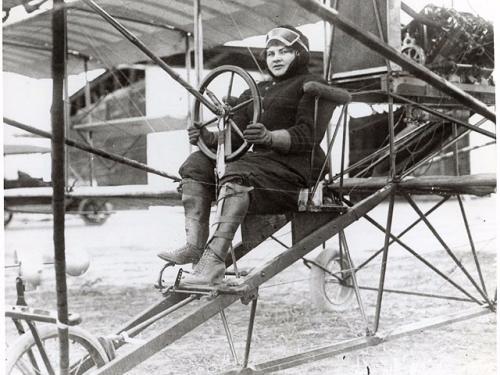

Stories of daring, stories of technological feats, stories of prevailing against the odds ... these are the stories we tell at the National Air and Space Museum. Dive in to the stories below to discover, learn, and be inspired.
Showing 621 - 630 of 701

December 08, 2011
Stranded. Six days from its home port of San Francisco, a luxurious Boeing 314 flying boat, the Pacific Clipper, was preparing to alight in Auckland, New Zealand, as part of the airline’s transpacific service when the crew of ten learned of the Japanese attack on the U.S. fleet at Pearl Harbor on the morning of December 7, 1941.

December 07, 2011
In American military history there are few dates more familiar than "December 7th, 1941... a date which will live in infamy..." The Japanese attack at Pearl Harbor on that serene Sunday morning marked America's official entry into a global war that had been raging in Europe and throughout Asia for many years. Yet after the raid had ended, the wounded treated, and the dead counted, there remained pockets of hope that all was not lost that day.

December 02, 2011
When the floods in Thailand appeared in the news recently, my friends and colleagues recommended that I stay away. But how could I? It was only a 4.5 hour flight from China (where I would be attending the Lishui International Photography Festival November 5 - 9) and photographing the Bangkok (BKK) air traffic control tower at the Suvarnabhumi International Airport was a high priority on my “to do” list. Actually, the highest. It is the tallest freestanding air traffic control tower in the world at 132.2 meters (434 feet) and a major tower to include in my upcoming book and Smithsonian exhibition The Art of the Airport Tower.

November 22, 2011
Turkeys are generally considered to be flightless birds, but as this postcard from the files of the Museum's Archives Division vividly illustrates, they are capable of short hops, especially when at the controls of biplanes. If you're flying to your Thanksgiving destination, bon voyage, and keep your eyes peeled for flying turkeys. Allan Janus is a museum specialist in the Archives Division of the National Air and Space Museum.

October 28, 2011
What comes to mind when you think of the Statue of Liberty? America, freedom, democracy. Her image is immediately recognized around the world as an ambassador for the United States and icon of the American dream. She has been the focal point of many a celebration over the years and in several cases, the gracious hostess (and waypoint) for aerial races and demonstrations. In celebration of her 125th anniversary, we gathered a few images, objects, and posters that feature inspiring views of Lady Liberty in the context of flight.

October 23, 2011
Blogs across the Smithsonian will give an inside look at the Institution’s archival collections and practices during a month long blogathon in celebration of October’s American Archives Month. See additional posts from our other participating blogs, as well as related events and resources, on the Smithsonian’s Archives Month website .

October 21, 2011
If you're still stumped over what your costume will be for next Saturday's big Air & Scare at the Museum's Udvar-Hazy Center (October 29 from 2 - 8 pm), the photograph shown above, from the July 1918 issue of Die Luftflotte, might provide some inspiration.

October 16, 2011
You know when you're packing up for a move to a new house — boxes everywhere — frantic activity to get everything stored away before the movers arrive, and you still have to clean out the fridge.

October 05, 2011
This piece is a follow up to the posts below, in which I describe my experience flying a PT-13 Stearman that was used to train Tuskegee Airmen during WWII, from Moton Field, Alabama to Andrews AFB.

September 09, 2011
This post is a follow up to Preserving and Displaying the "Bat-Wing Ship" published on June 24, 2011.